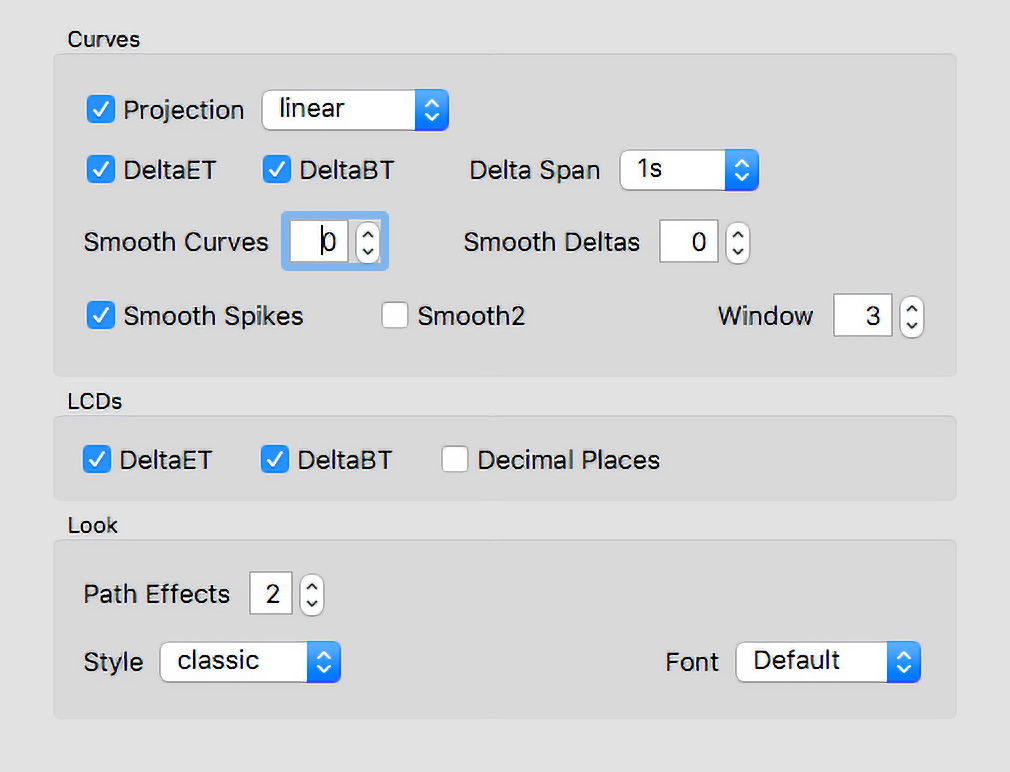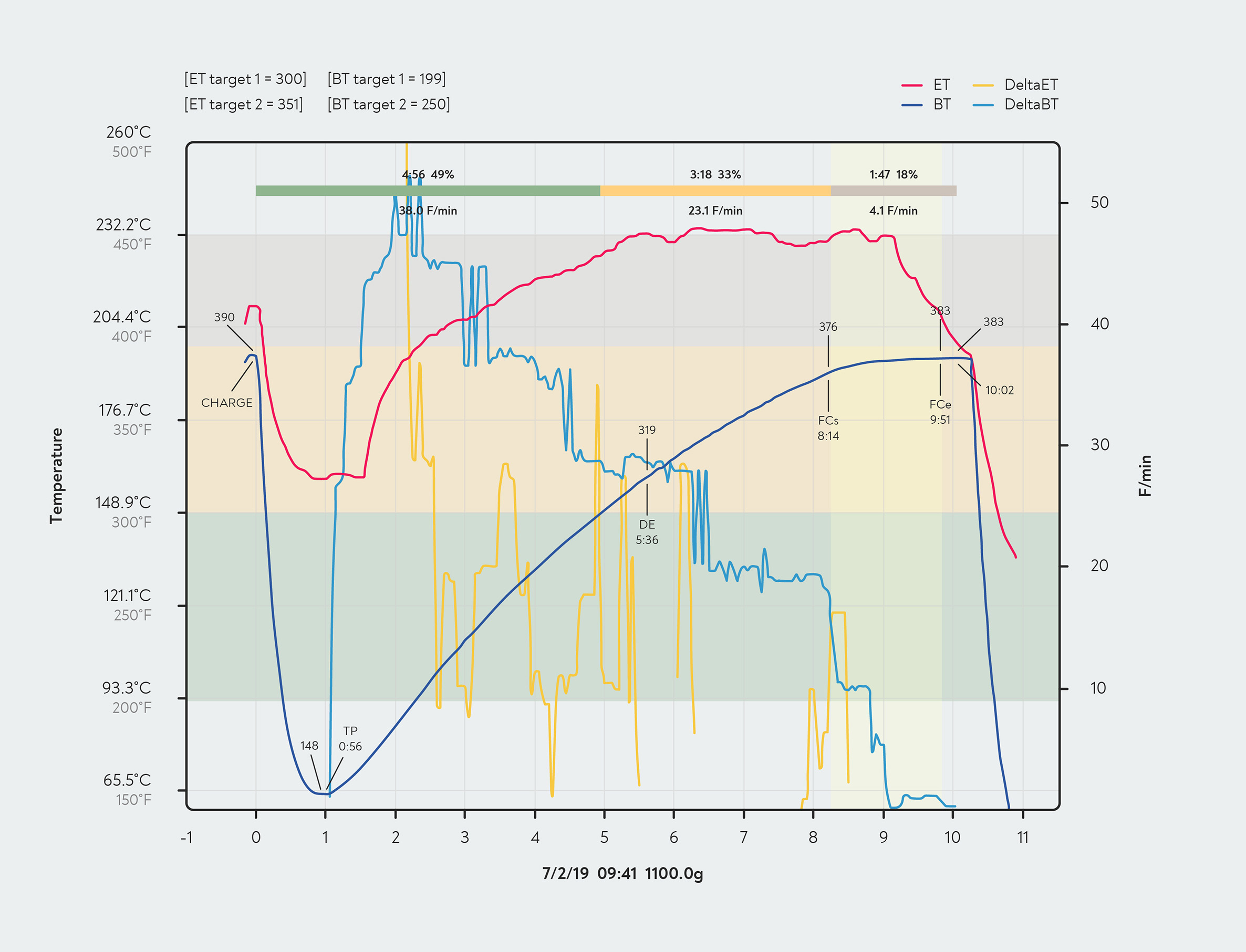Over years of consulting for roasteries all over the world, Scott has observed that the following mistakes are particularly widespread:
Excessive Data Smoothing
The signal from your temperature probes invariably includes a certain amount of noise. In order for you to read roast curves easily, it’s necessary to smooth out the noise. If you apply too much smoothing to your data, however, it can obscure some inconsistencies or errors in your roast curves.

 Noisy data can make roast curves harder to read.
Noisy data can make roast curves harder to read.
If your roasting software allows you to adjust the amount of smoothing applied to the data, use the smallest amount of smoothing that will give you readable curves. You may choose to use more data smoothing to view your curve when looking for trends, such as plateaus, and less smoothing when looking for events, such as the onset of first crack.
Unresponsive Temperature Probes
As we showed in Chapter 1, thicker probes take longer to heat up and therefore respond to temperature changes more slowly than thinner probes. This can delay the moment at which events such as the crash and flick become visible in your roast curve. As a result, it may not be possible for you to respond to them in time to mitigate their effects on the roast.
Thick, slow probes can also hide some inconsistencies and mistakes in the roast curve, similar to the way data smoothing does. To avoid these problems, use probes that are 2.5–4 millimetres in diameter.
Too Many Batch Sizes
In Chapter 2, we explained why it’s preferable to limit the number of batch sizes you roast to one or two. Using a single batch size makes it much easier to master the roast curve and between-batch protocol (BBP) needed to roast a coffee. With multiple batch sizes, you will need to employ different curves and BBPs for each,